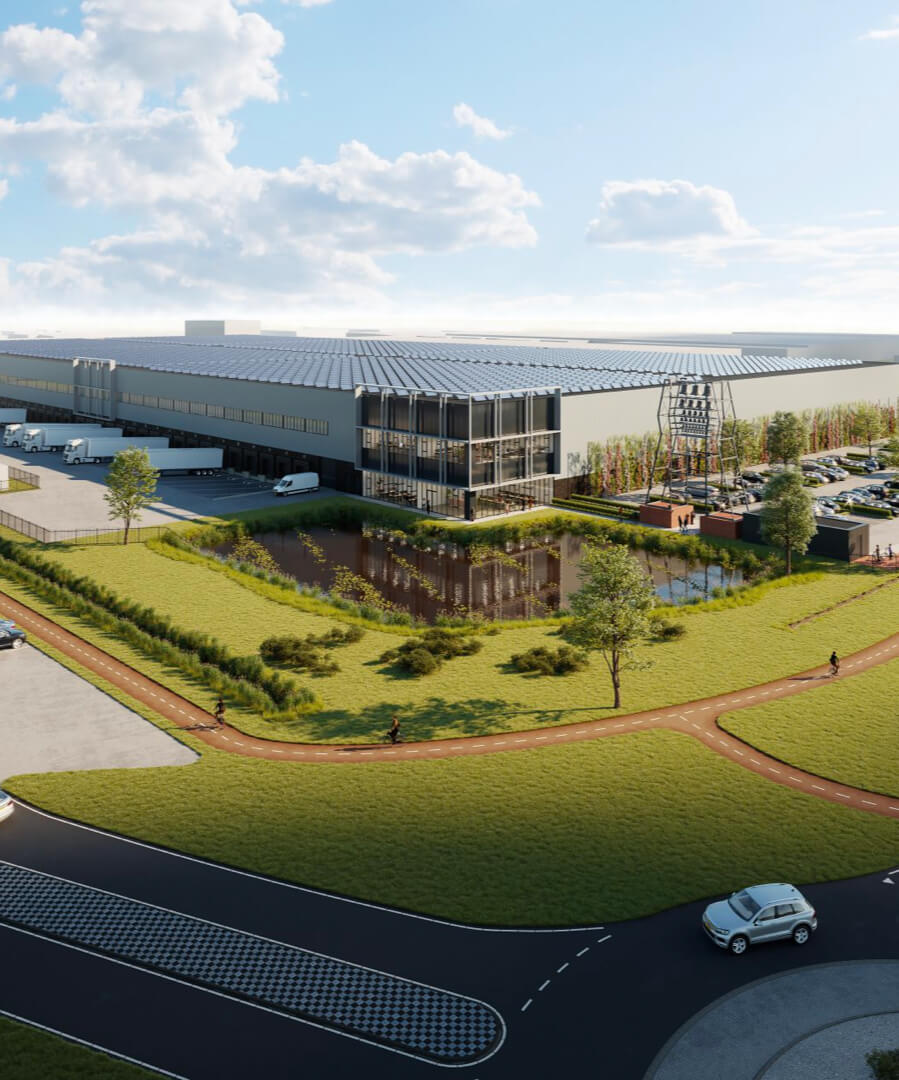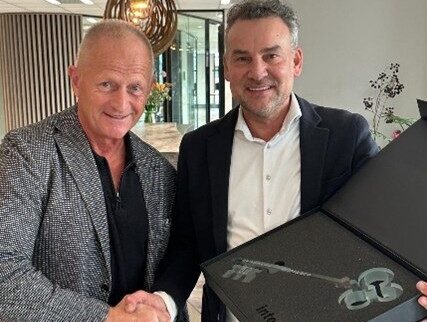We use cookies and similar technologies to make our website easier and more personal. You can always choose which types of cookies you want to allow. Read more about this in our cookie statement.
Collaboration for innovative energy infrastructure CLIC
18 February, 2022
The first European campus for urban logistics innovation to rise near Amsterdam will have an innovative energy system. Developer Intospace, Essent Energy Infrastructure Solutions (EIS) and grid operator Liander will set up a Hybrid Energy Community System (HECS) for the campus. With this energy community, the three parties will organize energy management on a local level with maximum efficiency so that the public electricity grid is less burdened.
In a HECS, supply and demand are balanced at the local level to minimize peak loads on the regional and national electricity grid. In this way, synergy at the local level leads to better pricing for customers and the system as a whole partially solves regional grid congestion. Existing infrastructure is better utilized and new infrastructure can be set up more efficiently and with lower costs. CLIC is focused on zero-emission urban logistics, which is largely determined by the fleet of (small-scale) electric vehicles that bring all orders to the front door, so-called “last mile logistics”. So the availability and optimal use of electricity are of great importance to CLIC.
Shared Economy
“Today we are giving the go-ahead to start exploring how to shape the HECS,” Intospace CEO Tim Beckmann said at the signing of the cooperation agreement Tuesday. “Due to the overload of the public electricity grid, we are looking for innovative, future-oriented solutions together with Essent and Liander. In this HECS, we are steering towards smoothing the peaks in Liander’s regional grid by means of a virtual power plant. By combining the available network capacity at CLIC, the site and its users can do with less heavy connections to the electricity grid. It’s the sharing economy in optima forma!”
CLIC’s advanced energy system also ensures that there is always sufficient electricity available on the campus, which will have one of the largest electric vehicle charging platforms in Europe. In addition, it should allow CLIC to feed surplus energy back into the public grid and make unused electricity storage capacity available to the grid. This will make CLIC part of the solution rather than part of the energy problem.
Optimizing and balancing usage
Developer Intospace is setting up an Energy Service Company (ESCo) in partnership with Essent EIS, with Intospace as its customer. With this, Essent EIS will take care of the development of a digital, integrated energy system (‘virtual power plant’) that will optimize and balance energy use on CLIC at the area level. Liander provides the electricity grid and connections for all CLIC users. Together they will ensure maximum energy efficiency and prevent too much peak load from occurring simultaneously. Essent’s digital control of CLIC and the associated exchange of electricity also reduces the load on the electricity grid for Liander.
“This is a unique Dutch collaboration with which we are taking the next step in the energy transition,” said Essent COO Stephan Segbers. “By cleverly connecting energy flows such as generation, storage and charging infrastructure, Essent makes it possible to make Amsterdam’s urban logistics more sustainable. Through our digital layer, we create a unique integrated energy system that, in addition to the energy transition, also helps grid operator Liander stabilize the energy grid.”
Smooth exchange
Liander is involved in CLIC to facilitate the smooth exchange of electricity between the companies on CLIC. This is done within the limits of the grid so that no one is left without electricity. Liander and Essent exchange the necessary data to determine when there is room to store solar-generated electricity in the locally available batteries or to supply it back to the national grid. Charging from the many charging stations is also done depending on this.
This prevents large peaks in Liander’s regional grid, and therein lies the great benefit of such an energy community. After all, the aim of CLIC is to reduce the peak load on the regional grid so that more users can access the grid, thereby accelerating the sustainability of urban logistics. Liander foresees that the CLIC model can also work at other business sites around the country. “We guarantee the companies on CLIC the reliability of and access to our public grid,” said Liander director Huibert Baud. “We are innovating with the CLIC partners to smartly facilitate local energy exchange as a grid operator. This allows entrepreneurs to maximize sustainability and get the energy they need at the desired time through a smart combination of local generation, storage and the public grid.”





